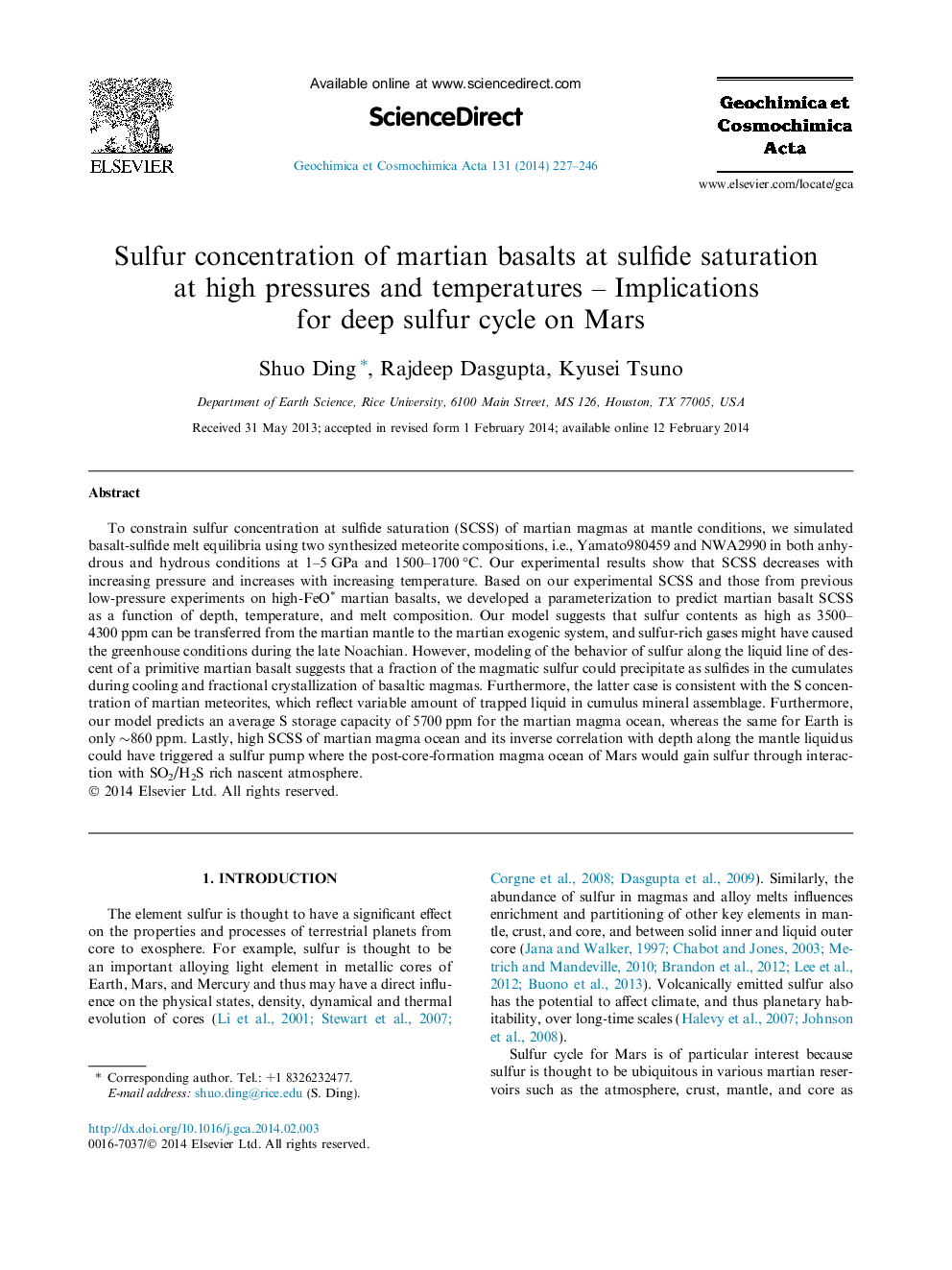| Article ID | Journal | Published Year | Pages | File Type |
|---|---|---|---|---|
| 6438636 | Geochimica et Cosmochimica Acta | 2014 | 20 Pages |
Abstract
To constrain sulfur concentration at sulfide saturation (SCSS) of martian magmas at mantle conditions, we simulated basalt-sulfide melt equilibria using two synthesized meteorite compositions, i.e., Yamato980459 and NWA2990 in both anhydrous and hydrous conditions at 1-5 GPa and 1500-1700 °C. Our experimental results show that SCSS decreases with increasing pressure and increases with increasing temperature. Based on our experimental SCSS and those from previous low-pressure experiments on high-FeOâ martian basalts, we developed a parameterization to predict martian basalt SCSS as a function of depth, temperature, and melt composition. Our model suggests that sulfur contents as high as 3500-4300 ppm can be transferred from the martian mantle to the martian exogenic system, and sulfur-rich gases might have caused the greenhouse conditions during the late Noachian. However, modeling of the behavior of sulfur along the liquid line of descent of a primitive martian basalt suggests that a fraction of the magmatic sulfur could precipitate as sulfides in the cumulates during cooling and fractional crystallization of basaltic magmas. Furthermore, the latter case is consistent with the S concentration of martian meteorites, which reflect variable amount of trapped liquid in cumulus mineral assemblage. Furthermore, our model predicts an average S storage capacity of 5700 ppm for the martian magma ocean, whereas the same for Earth is only â¼860 ppm. Lastly, high SCSS of martian magma ocean and its inverse correlation with depth along the mantle liquidus could have triggered a sulfur pump where the post-core-formation magma ocean of Mars would gain sulfur through interaction with SO2/H2S rich nascent atmosphere.
Related Topics
Physical Sciences and Engineering
Earth and Planetary Sciences
Geochemistry and Petrology
Authors
Shuo Ding, Rajdeep Dasgupta, Kyusei Tsuno,
